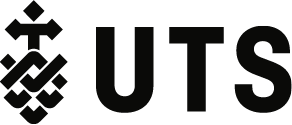Everyone has their unique worldview shaped by their identities and decision-making. Identities are multidimensional and built throughout one’s life individually and socially – Identity is the lens through which we engage with the world and thus shape our worldviews. There are various components that make up a worldview, such as beliefs and values, cultural and historical aspects, social experiences, perceived reality, attitudes and assumptions.
Our worldviews directly and subconsciously influence day-to-day ideas and actions. Reflecting on our perception of the world, and how this might shape our decision-making is an important practice for learning, professional development and navigating personal life.
Worldviews and the global stage
Worldviews shape our discourses and practices. From a sociocultural perspective, we perceive, interpret, and understand the world around us in many ways, which are informed by our cultural background, generational experience and societal heritage. Worldviews influence the decisions we make in our personal lives – for example, our priorities, values and interpersonal relationships.
This concept can also be a communal-collective enterprise and relates to many professional industries, in both large and complex scales. International Relations is one area that greatly depends on worldview reflections, due to its political and global scale. The global community has many influences that lead countries to perceive threats, opportunities, allies and adversaries. These perceptions, in turn, guide foreign policies, diplomatic engagements and strategies for international cooperation or conflict. A lot depends on how these interpreted perspectives intersect or diverge. In this blog, we outline an effective way to explore the concept of worldviews in an International Relations setting and provide key takeaways that can be adapted to other study areas.
In this section of the subject, The Future of the International Order, within the Master of International Relations, students focus on the following key areas:
- Understanding the importance of worldviews in International Relations
- Analysing their personal worldview
- Explaining how worldviews can be present in real-world industry situations
Self-reflexivity of individuals can enable a greater understanding of different positions and the capacity to work towards building a greater consensus (Goldberg, 2009).
Worldviews in Practice: International Relations
Students explore the focus areas through an interactive learning sequence. The interactive involves animated personas named Amina, Jamal and Alex who are participating in a climate change accord scenario. Students deconstruct and analyse the personas’ underlying beliefs and values. This process enables students to recognise biases, appreciate diverse perspectives, and foster more empathetic and effective communication in an increasingly interconnected world.
The activity aims to step students through different aspects of worldviews. Each persona has a unique identity layered with various aspects and lived experiences. As the scenario unfolds, a deeper understanding is presented to the viewer to provide space for introspective thinking.
Each persona then explains their worldview through their lens of understanding. Students reflect on what aspects of identity could have shaped each person’s worldview and which International Relations theories and topics they are likely to be interested in.

In this scenario, each persona focuses on a different area of concern during their unique approach to the negotiation. With clear communication, active listening and mediation skills each persona can present their ideas and come to a conclusion that incorporates all perspectives. The scenario mimics how a negotiation might unravel, although provides a safe and deadline-free space as an opportunity to observe, actively listen and understand the value of another’s perspective. These skills eventually become easier to quickly engage over time and practice.

The activity sequence is wrapped up with a prompt for students to reflect on their own identity, the meaning of privilege and their International Relations worldview. They are provided the option to share their thoughts and reminded to not label their worldview as “wrong” or “right” but rather reflect on any insights, limits or biases.
Facilitation practices
Understanding diverse worldviews and our own is important for many industries and contexts. If you are considering creating a sequence to help students engage with these practices, consider these takeaways:
- How do worldviews relate to my industry or field?
- Is it possible to replicate aspects of a professional scenario for students to practice understanding worldviews in context?
- How might I provide a safe space for students to reflect and explore factors of their own identity and perception of the world?
This learning sequence was developed by Jess Gifkins, Nick Manganas, and Matisse Strong and created by the education media team Kristy Everett, Josie Mercer and Simone Wang. It was inspired by another subject in the Master of International Relations, Intercultural and International Communication, developed by Paola Eiras.
References
Castells M. (2006). Globalisation and identity: a comparative perspective, Transfer (56-76). https://docs.llull.cat/IMAGES_175/transfer01-foc01.pdf
Goldberg, R. M. (2009) How our worldviews shape our practice. Conflict Resolution Quarterly, 26 (4), p. 405-431. Doi: http://dx.doi.org/10.1002/crq.241
